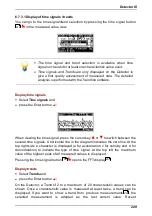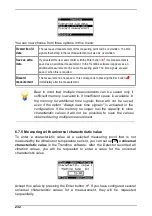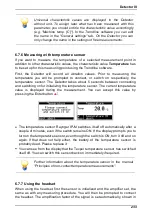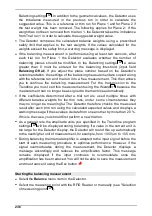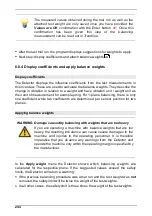
241
Detector III
Press the Enter button
once amplitude and phase have stabilized after a
time.
Once you have measured all sensor positions, the results are displayed in a
table. If the measured values are OK, select the
Values are OK
menu item and
press the Enter button
to save the measured values. If you are not satisfied
with a measured value, you can use cursor keys
and
to select this value
and the Enter button
to repeat this individual measurement.
At this point, you can select a comment. In the comment list, you can create a
new comment
or select an existing one (see "Managing comments for
"). If no comments exist in the list, the edit field for the
comment input is shown. Confirm your settings with the Enter button
.
The measured values ob tained during the reference run are only
saved after you confirm b y clicking
Values are OK
b y pressing
the
Enter button
. In the tab le of results, click the Esc b utton
to
discard the measured values and the Detector returns the
Balancing menu. Repeat the reference run if necessary.
Now you can proceed with the trial run
.
6.8.3 Trial run
To perform the trial run select
Trial run
from the balancing menu. With two-plane
balancing the Detector initially guides you through the test measurement at plane
1 then continues with plane 2. In the trial runs, apply a known weight to a known
position. With this information, the Detector determines the change between
reference run and trial run and can thus determine the influence coefficients.
These indicate how machine imbalance changes with a certain weight and are
used calculate the balancing weights.
If the change in vibration is too little because the test weights selected were too
small (see also "Important information" in "Balancing measurement"
, the
227
68
241
234



